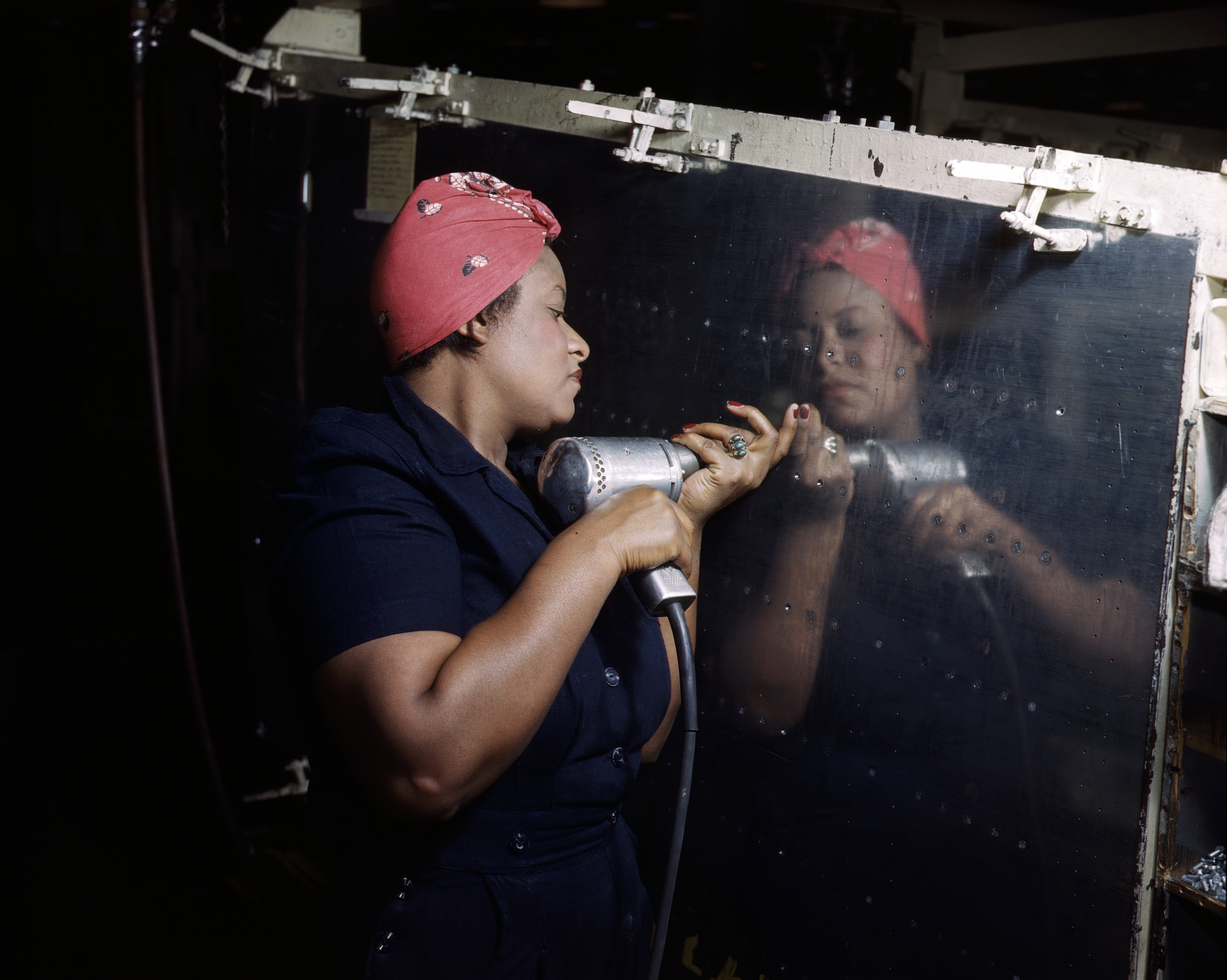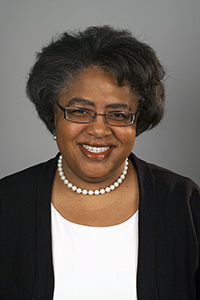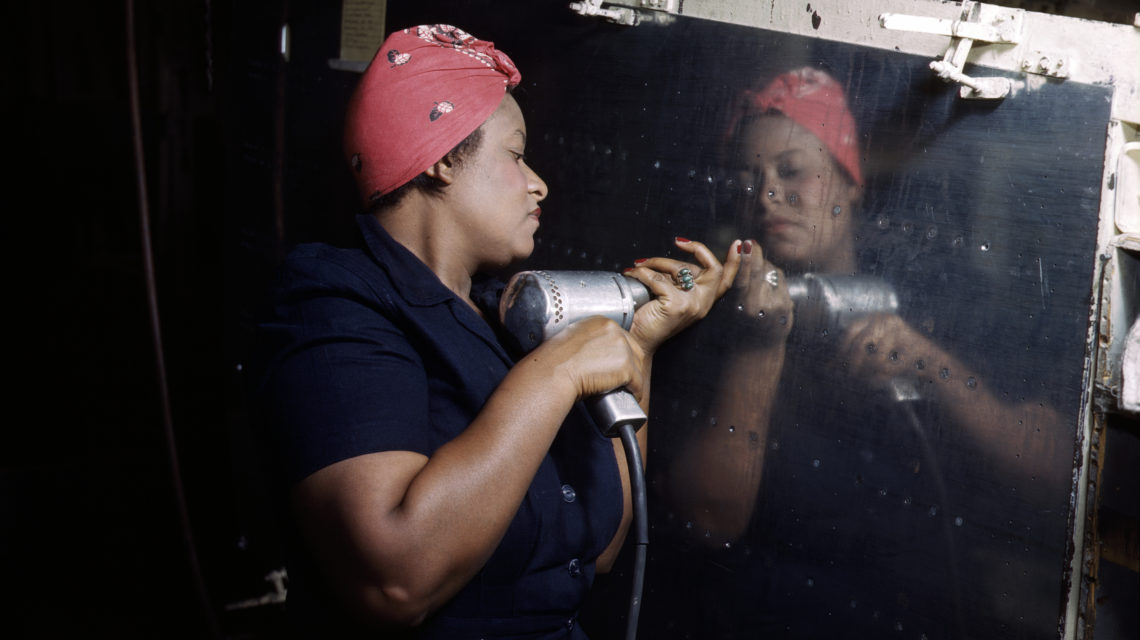By Jocelyn Frye
Center for American Progress, August 22, 2019.
African American and/or Black women earn $.61 for every dollar, and their equal pay day is August 22, 2019; Native American women earn $.58 for every dollar, and their equal pay day is September 23, 2019; Latinas earn $.53 for every dollar, and their equal pay day is November 20, 2019.
Black Women’s Equal Pay Day arrives around this time each year, marking the estimated number of extra months—roughly eight months—that a Black woman working full-time year-round in the United States must work into the current year to have earned what her white male counterpart earned during the prior year. This year, Black women will have to work well into the month of August to catch up to the wages that white men earned in 2018 alone. In concrete terms, this means that Black women experience a pay gap every day—and this gap adds up. In 2017, for example, Black women earned 61 cents for every dollar earned by white men, amounting to $23,653 less in earnings over an entire year. In the span of a 40-year career, this translates into an average lifetime earnings gap of $946,120 between Black women and white men.
The earnings chasm between Black women and white men is not new. Closing the divide, however, requires widening one’s focus beyond numerical differences that tell only part of the story. It requires developing a deeper understanding of the different factors driving the wage gap for Black women, some of which consistently devalue their experiences and work and limit their future opportunities. It requires prioritizing reforms that specifically address the unique discrimination that Black women face at the intersection of race and gender. And it requires creating greater accountability and transparency in pay practices in order to surface and tackle the most persistent problems.
Connecting the dots: Why equal pay matters to closing the wage gap
The gap in earnings between women and men, known as the gender wage gap, is fueled by multiple factors. Some of the gap can be attributed to factors that are measurable, such as differences in seniority or experience, but these types of observable factors cannot explain a portion of the gap. It is this unexplained portion of the gap that is often ascribed to reasons that are harder to quantify and detect such as discrimination. There is also a racial wage gap that has led to persistent wage disparities between workers of color and white workers. Similar to the gender wage gap, this racial wage gap is driven by explainable factors such as education levels as well as unexplained factors that could stem from bias.
Black women experience both a race and gender wage gap that reflects the intersectional reality of their daily lives. The sharpest earnings differences are between Black women and white men, who are benchmarked as the highest earners, but Black women also experience wage disparities when compared with white women and Black men. As experts have noted, it is important to understand that this race-gender wage gap consists of more than simply adding the separate numbers associated with each gap. Rather, it reflects a unique effect that results from how the combination of race and gender are perceived together.
While the wage gap refers to the gap in earnings between groups of workers, equal pay refers to the legal principle of equal pay for equal work. This principle embodies our nation’s overarching commitment to equality and is the cornerstone of legal protections aimed at combating pay discrimination and ensuring fair pay. The vast majority of employers have a continuous legal obligation to ensure equal pay for equal work in their hiring and pay practices, and this obligation does not shrink or waver based on the size, scope, or presence of a pay gap within their workforce. Actions taken to promote equal pay play an important role by helping to tackle the unexplained and perhaps most stubborn portion of the wage gap that is frequently attributed to discrimination. These efforts must work in tandem with other strategies to close the wage gap in its entirety.
How biases about Black women and work affect wages
Achieving equal pay for Black women, which will begin to close their overall wage gap, requires a deeper and more comprehensive understanding Black women’s work and the context in which they perform that work. The reality is that how work is viewed is frequently based on who is doing the work and what type of work is being performed. Whether the work is done primarily by women versus men or by white workers versus workers of color; whether the work is highly paid, low paying, or unpaid; whether the work is full time, part time, or seasonal; and whether the work requires physical labor, specialized skills, or research and analysis are all factors that influence how work is perceived and valued. Identifying factors that affect how Black women’s work is viewed and valued is key to pinpointing where discrimination is occurring and implementing strategies to ensure fair pay practices.

Today, Black women work in a variety of jobs and industries at all different levels. Yet, many Black women still confront the same misperceptions about their work that have formed at the intersection of racial and gender biases for decades. As a result, Black women face unfair expectations, unique challenges, and biased assumptions about where they fit in the workplace that differ from the perceptions held about women from other racial and ethnic groups as well as men. Black women have had to navigate and at times confront competing, flawed, or incomplete narratives about their work ethic, family responsibilities, and overall value that influence decisions about what they should earn. When sexism and racism intersect in the workplace, the effect is devastating.
Black women have always been expected to work and have had the highest labor force participation among all women for years. This work expectation is deeply rooted in longstanding racial and gender biases that have been present since the nation’s founding—extending back to the nation’s dehumanizing history of slavery and continuing into the post-slavery era, 20th-century workforce expansions, and the present day. Historically, Black women’s work was tied, in part, to their less-privileged status in comparison with white women, who were elevated within the societal hierarchy and expected to represent a paternalistic feminine ideal focused exclusively on the home. From the 19th century, and well into the 20th century, Black women worked but were frequently relegated to the lowest-paying jobs. Legal restrictions were used to exclude all women—regardless of their race or ethnicity—from many high-paying jobs reserved exclusively for men. Although these outdated views were rejected over time, Black women still face the potent remnants of this historical narrative that devalued their status as women and as workers. As a result, Black women’s greater labor force participation has not always translated into higher wages. It has also not quelled negative stereotypes about Black women’s attitudes and work ethic that assume that Black women do not work hard, resist hard work, must be pushed to perform well, and should be satisfied with any job rather than deserving of the best job.
Black women frequently encounter a workplace narrative that deemphasizes the importance of their personal caregiving responsibilities or suggests that their caregiving roles should be secondary to their paid work. This narrative has historical roots dating back to the era of slavery, when Black women faced sexual violence and exploitation to produce free labor without rights to their children. In later years, this narrative was also visible in Black women’s disproportionately high rates of work in domestic and caregiving jobs, where they received low wages and little consideration for their own family obligations. Yet, today, Black women disproportionately work in caregiving jobs, and Black mothers with young children have the highest labor force participation rates among all mothers. Minimizing the importance of responding to care needs has practical consequences that affect Black women’s earnings, job success, health, and well-being. Black pregnant workers, for example, who are denied accommodations such as additional water breaks or access to light duty positions may have to choose between jeopardizing their health or losing their job. Moreover, this traditional preference in favor of paid work also reflects the historically male-centered view of work that obscures a more holistic perspective about how work should be valued. Unpaid work in the home—which, in most cases, is performed primarily by women—is frequently ignored but increasingly important to families. While women overall work fewer paid work hours than men, they spend more time than men doing unpaid work around the home and caring for children. On top of these responsibilities, Black women are the most likely among all women to spend the most time continuing to do paid work. The skepticism about the importance of caregiving responsibilities means that Black women may face a wage penalty when trying to be more responsive to their work and family roles.
While Black women have moved into more diverse fields over the years, they have also faced extensive occupational segregation, meaning they are concentrated in jobs that pay lower wages with limited mobility. Even when they have moved into jobs traditionally held by men or white workers and moved up the career ladder into managerial or leadership roles, Black women often encounter resistance because they are not perceived as fitting the traditional, typically male standard of success. This narrow view perpetuates a narrative that limits Black women’s job options and erects barriers to their future career advancement.
Black women’s unique challenges are often ignored or not raised at all. Too often, the public narrative about women has focused primarily on the experiences of white women as opposed to those of Black women and other women of color. While it is increasingly common for employers to tout the steps that they have taken to respond to women’s challenges in the workplace generally, there is less conversation about specific, targeted efforts to address how different types of biases play out for women across race, ethnicity, and other factors. The lack of intersectional analysis can result in an incomplete picture that excludes crucial perspectives and gives little attention to why disparities, such as those between white women and Black women, in earnings, advancement opportunities, unemployment rates, and other areas continue to persist.
Left unaddressed, these different narratives and workplace dynamics will continue to have real consequences for Black women’s earnings. They also reveal how discrimination and stereotypes become entrenched in workplace structures and practices.

Reforming equal pay to combat race and gender biases
In order to secure equal pay for Black women, policymakers must focus on the range of actions needed to respond directly to the race and gender biases that affect wages. This means providing Black women with stronger legal protections and better information about pay practices, promoting greater transparency and accountability, and identifying new tools to target discrimination, including:
- Strengthening legal protections to make clear the availability of intersectional legal claims to address pay discrimination and adding new protections to better guard against caregiver discrimination.
- Promoting transparency by requiring public reporting of employer pay gaps broken down by race and gender to provide greater visibility into employer pay practices.
- Establishing a right to request for all job applicants to allow them to receive information about a potential job, including the salary range, the employer’s equal pay policy (with explicit protections covering intersectional pay discrimination claims), the employer’s pay gap by race and gender, and the frequency of the employer’s compensation analyses.
- Creating a new federal glass ceiling commission tasked with undertaking a comprehensive assessment of the effectiveness of strategies to improve Black women’s earnings and advancement as well as those of women overall. The 30th anniversary of the original federal Glass Ceiling Commission, established by the Civil Rights Act of 1991 for a four-year period, will occur in 2021.
- Targeting employers who are federal contractors with heightened accountability and enforcement measures such as updated federal contractor glass ceiling reviews to analyze progress for Black women—and women more broadly—across industry in advancing into upper-level management. Such reviews should include an examination of attrition rates by race and gender and the prevalence of workforce segregation. Future research should explore ways to incorporate race and gender equity assessments into the contractor selection process to reward high-performing companies that have succeeded in expanding opportunities for women and people of color.
- Providing new funding for worker advocates to assist workers with questions about pay and other forms of discrimination as well as legal counseling about their rights.
- Supporting economic policy changes to improve access to paid family and medical leave, affordable and high-quality child care, and caregiver stipends.
- Requiring employer reporting of steps taken to address pay discrimination based on race, gender, ethnicity, and other factors in Securities and Exchange Commission filings. This includes anti-bias training for all levels of staff, including leadership, managers, and supervisors.
- Increasing funding for enforcement to ensure compliance with equal pay protections and to undertake targeted efforts to examine the prevalence of race and gender bias in pay discrimination cases.
- Initiating comprehensive research on the state of the workforce by industry broken down by race and gender to gain a better understanding of Black women’s workplace experiences.
These measures can complement other actions aimed at improving workplace conditions for women such as the Paycheck Fairness Act, the Pregnant Workers Fairness Act, and the Domestic Worker’s Bill of Rights.
Conclusion
Black women’s work is vital to the success of their families, their communities, and the overall economy, yet Black women are confronted by unique workplace and societal barriers that undermine their ability to thrive. Disparities in Black women’s wages stem from a mix of interconnected factors, including the devaluing of the work that Black women do, the prevalence of entrenched biases rooted in race and gender bias, perceptions about the relative importance of certain types of work, occupational segregation, resistance to structural change, and more. To be effective, equal pay measures must focus on pursuing new strategies and reforms that acknowledge and tackle these problems head-on. Black women deserve more than one day of recognition about the pay gap. They deserve concrete action steps that prioritize fair pay and economic stability for themselves and their families. Equal pay for Black women is long overdue—and it cannot afford another year’s wait.
Jocelyn Frye is a senior fellow at the Center for American Progress.












